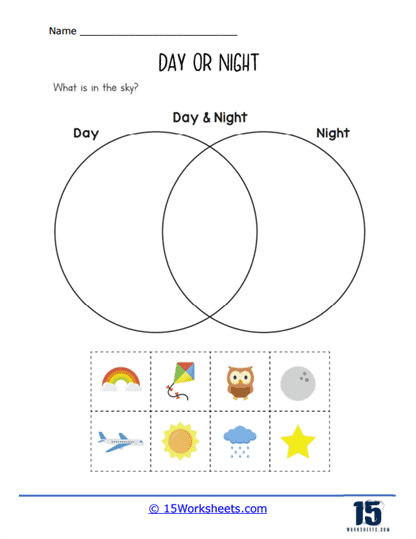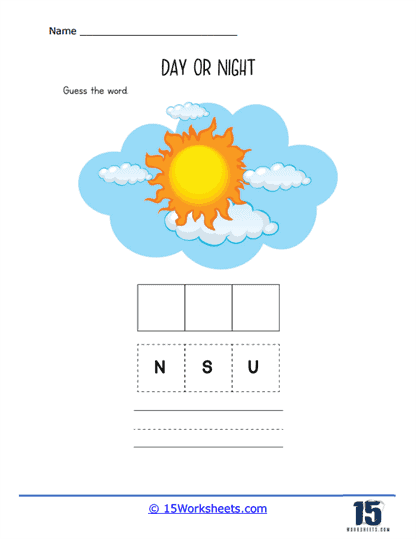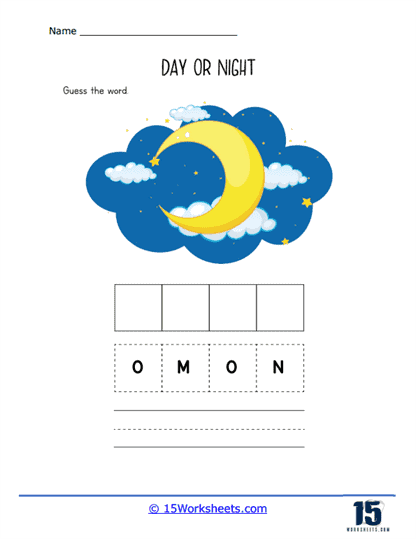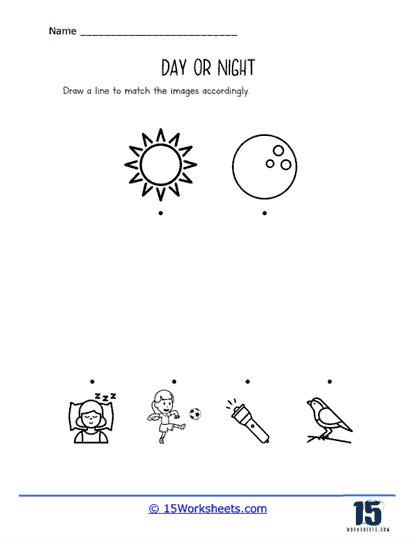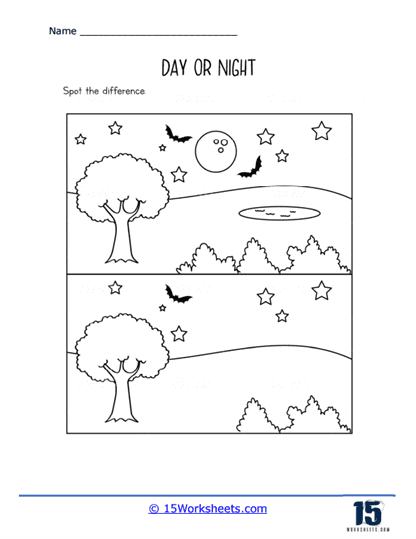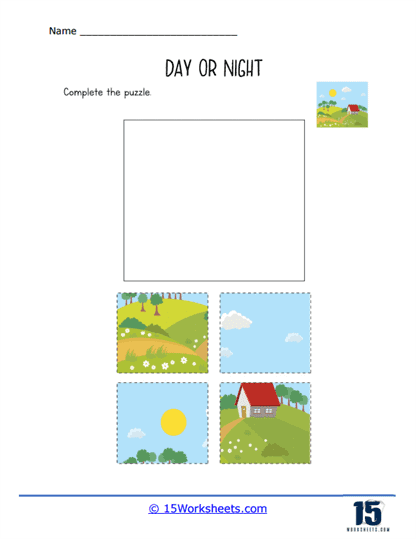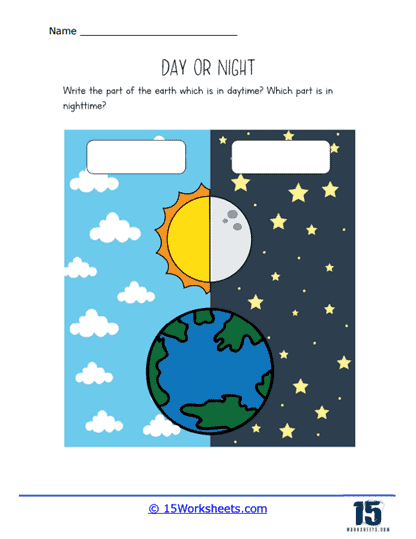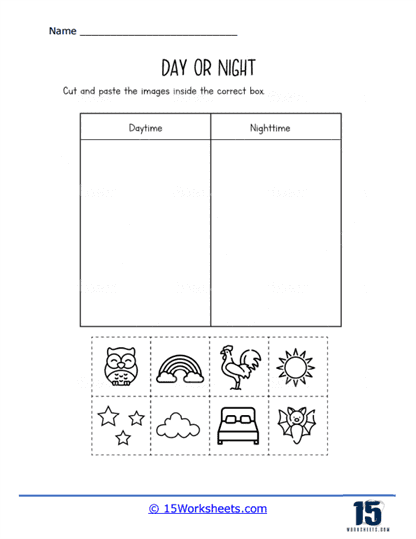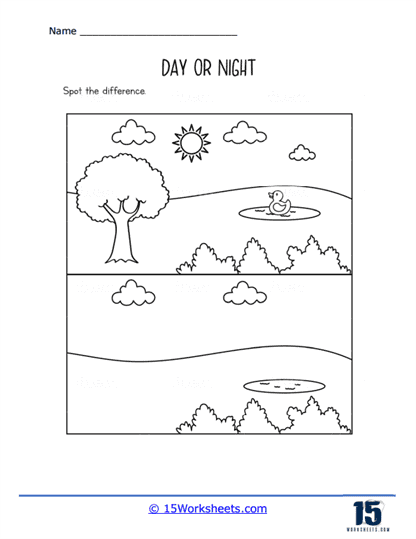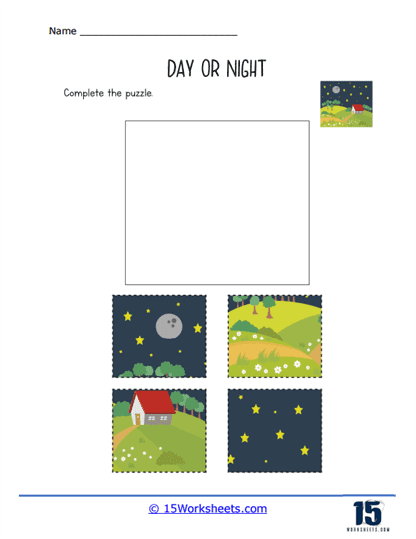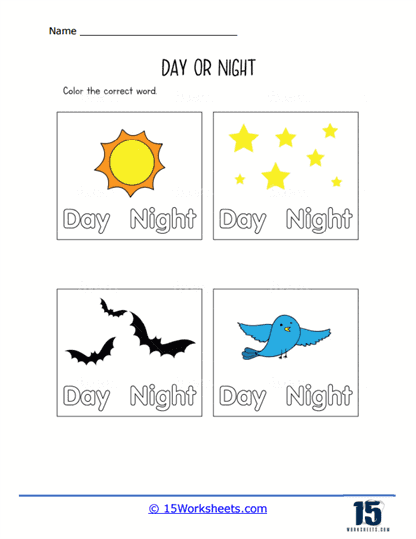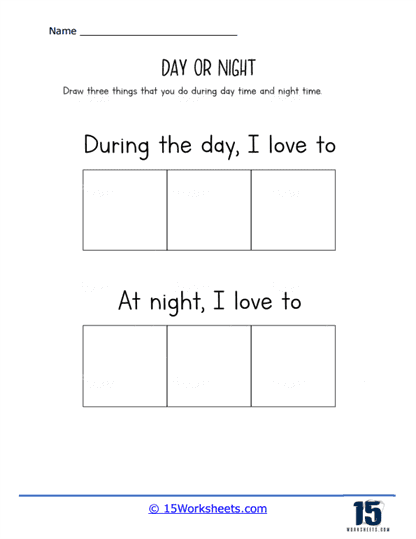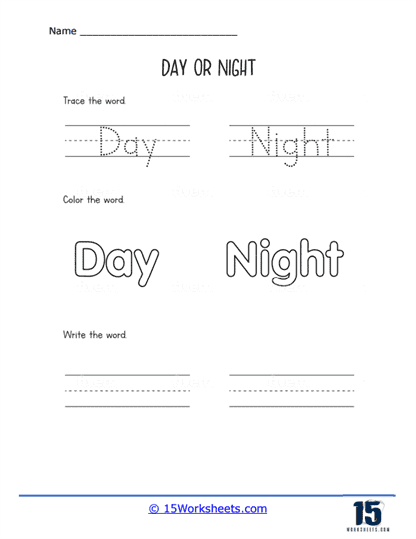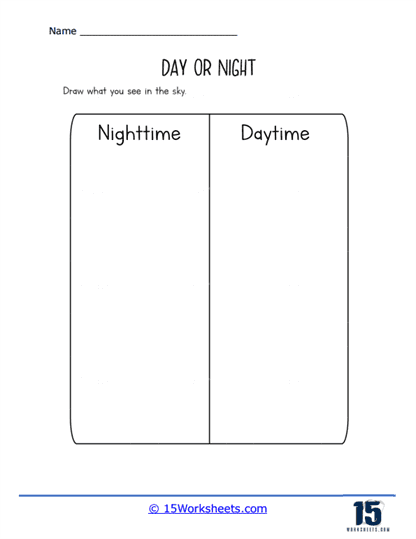Day or Night Worksheets
All About These 15 Worksheets
Day or Night worksheets are educational resources designed to help children learn about and differentiate between daytime and nighttime concepts, objects, and activities. These worksheets typically include activities that require children to identify, categorize, or compare items or scenarios associated with day or night.
Some common elements of Day or Night worksheets may include:
Sorting Activities – Children may be asked to sort pictures or words into categories based on whether they are associated with day or night (e.g., the sun, the moon, stars, breakfast, dinner, etc.).
Matching– Worksheets may feature matching games where children have to connect daytime or nighttime items with their corresponding descriptions or images.
Coloring – Coloring pages can be used to teach children about the differences between day and night by having them color pictures or scenes associated with each time of day.
Comparisons – Children may be prompted to compare and contrast various aspects of day and night, such as the appearance of the sky, the level of activity, or the types of sounds heard.
Writing or Drawing Prompts – Worksheets may include prompts that encourage children to write or draw about their experiences or observations related to day or night.
Reading Comprehension – Short passages or stories about day or night can be used to help children practice their reading comprehension and critical thinking skills.
Day or Night worksheets can be used in various settings, such as classrooms, therapy sessions, or at home, and can be adapted to suit different age groups and developmental levels. These worksheets help children develop their observational, critical thinking, and language skills while also teaching them about the natural world and the daily cycle of day and night.
How to Teach Kids the Concept of Day and Night
Teaching kids the concept of day and night can be enjoyable and educational with the right approach. Here are some tips and activities to help you effectively explain this concept to children:
Begin with observations:
- Encourage kids to observe their surroundings during the day and night, and ask them to describe the differences they notice.
- Discuss the presence of sunlight during the day and the absence of it at night.
Explain the earth’s rotation:
- Introduce the concept of Earth’s rotation around its axis and how it causes day and night.
- Use a globe and a flashlight to simulate the sun and demonstrate how different parts of the Earth experience daylight and darkness.
Talk about the sun and the moon:
- Explain the roles of the sun and the moon in creating day and night.
- Help kids understand that the sun provides light and warmth during the day, while the moon reflects the sun’s light at night.
Discuss daily routines and activities:
- Talk about the different activities people do during the day, such as going to school or work, and those they do at night, like sleeping or having dinner.
- Emphasize the importance of nighttime as a period for rest and recovery.
Incorporate stories and books:
- Read age-appropriate books or tell stories that highlight the differences between day and night, as well as the importance of both periods.
- Encourage kids to create their own stories or drawings about day and night.
Use arts and crafts:
- Create day and night-themed collages or drawings, using different colors and materials to represent the two periods.
- Make a simple day/night wheel that kids can rotate to visualize the transition between day and night.
Explore nocturnal animals:
- Teach kids about animals that are active during the night (e.g., owls, bats) and those that are active during the day (e.g., birds, squirrels).
- Discuss the adaptations these animals have developed to thrive in their respective environments.
Encourage questions and discussion:
- Prompt kids to ask questions about day and night, and provide age-appropriate answers.
- Engage them in conversations about their thoughts and feelings related to the two periods.
Remember, it’s important to be patient and use age-appropriate language when teaching kids about day and night. Reinforce these lessons through daily observations and ongoing discussions to help them better understand and appreciate the concept.
Leverage technology, such as educational apps or websites, to teach kids about time, and watch age-appropriate videos that explain the concept of time and its importance. Be patient and supportive throughout the learning process, as each child will progress at their own pace.
Encourage questions and discussion on time-related topics, providing clear, age-appropriate explanations. Remember, teaching the concept of time is an ongoing process that should be reinforced regularly. As children grow older, you can introduce more complex topics like time zones, daylight saving time, and historical timelines.

